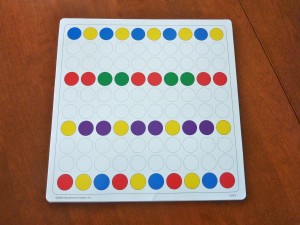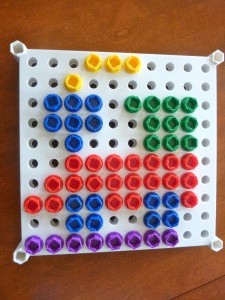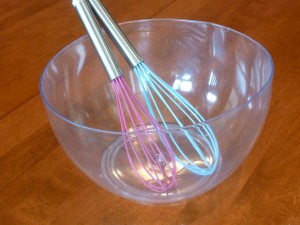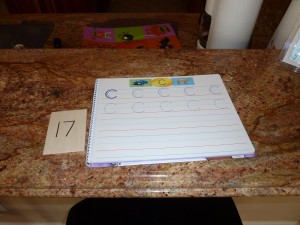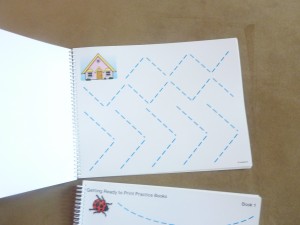I have to say that after doing this for a while, I have found myself noticing things that I’ve probably seen a million times but have never really “seen.” This next find is one of those things. I had just picked up some new markers for Andrew in the school supply aisle of our grocery store when I saw these garage sale stickers.
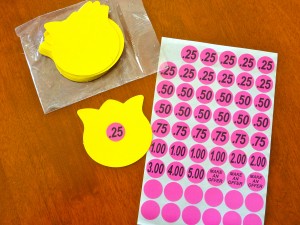
I was not planning a garage sale, however I did like all of the stickers with the different money amounts on them. They would be perfect for counting coins! I placed the stickers on some calendar cutouts (Post-It Notes, index cards or any paper works, I just like how the cutouts make it so easy to be thematic.) and got to work on the rest of the activity.
Since Easter is just around the corner, I paired the sticker-ed cutouts with some plastic Easter eggs to not only make it more colorful and fun, but also help him build fine motor skills (by pulling the parts of the egg apart to open it).
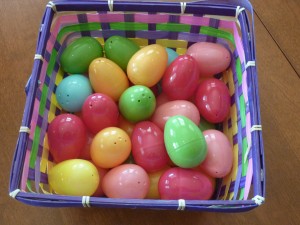
I grabbed a coin jar and filled some eggs with coins that added up to 25 cents, 50 cents, 75 cents and $1.00. I chose to do 6 eggs and mixed them in with empty eggs to make it more of a game.

My Obstacle Course Station Activity: Hunt, Add, Match

At the station, he has to find the eggs that had coins in them, open it, pour out the coins and we count them together. When we figure out the amount, we match up the egg and coins with a cutout that has the same amount.


If these amounts are too high for your child, there are blank stickers to write on or you can bypass the stickers altogether and write out amounts they are ready for, perhaps starting off with just pennies and counting by ones or using only one kind of coin to work on counting by 5’s or 10’s. Here are links to two posts I did on coin counting and why it is important to make sure they understand coin values before expecting them to be able to count mixed coins. Coin Counting Part 1 , Coin Counting Part 2
I hope I have shown you how easy it is to combine a few basic things to create a fun and purposeful activity to build developmental and academic skills? I cannot wait to see what else is out there waiting for me to notice! 🙂
Engage, Encourage and Empower!




